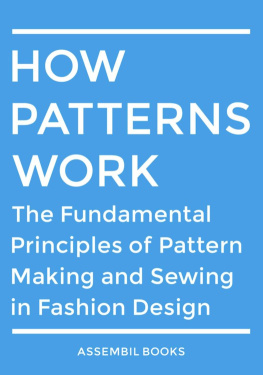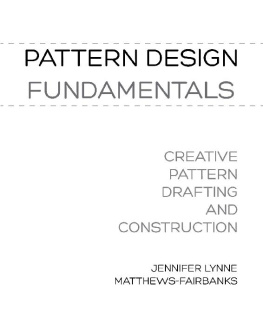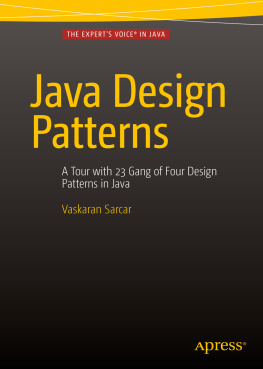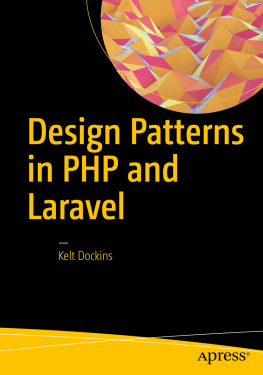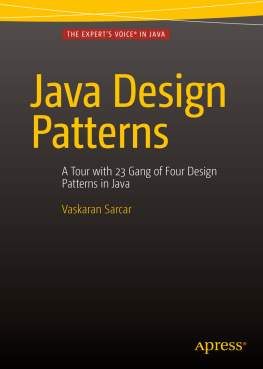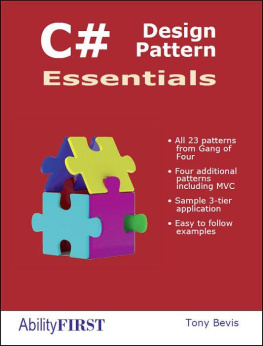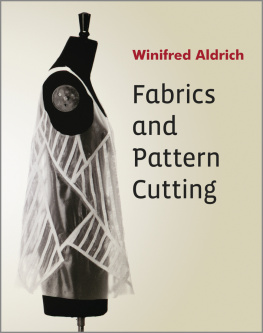Assembil Books - How Patterns Work: The Fundamental Principles of Pattern Making and Sewing in Fashion Design
Here you can read online Assembil Books - How Patterns Work: The Fundamental Principles of Pattern Making and Sewing in Fashion Design full text of the book (entire story) in english for free. Download pdf and epub, get meaning, cover and reviews about this ebook. year: 2013, publisher: Assembil Books, genre: Romance novel. Description of the work, (preface) as well as reviews are available. Best literature library LitArk.com created for fans of good reading and offers a wide selection of genres:
Romance novel
Science fiction
Adventure
Detective
Science
History
Home and family
Prose
Art
Politics
Computer
Non-fiction
Religion
Business
Children
Humor
Choose a favorite category and find really read worthwhile books. Enjoy immersion in the world of imagination, feel the emotions of the characters or learn something new for yourself, make an fascinating discovery.
- Book:How Patterns Work: The Fundamental Principles of Pattern Making and Sewing in Fashion Design
- Author:
- Publisher:Assembil Books
- Genre:
- Year:2013
- Rating:3 / 5
- Favourites:Add to favourites
- Your mark:
How Patterns Work: The Fundamental Principles of Pattern Making and Sewing in Fashion Design: summary, description and annotation
We offer to read an annotation, description, summary or preface (depends on what the author of the book "How Patterns Work: The Fundamental Principles of Pattern Making and Sewing in Fashion Design" wrote himself). If you haven't found the necessary information about the book — write in the comments, we will try to find it.
If you have tried to learn pattern making in the past and felt daunted by the complex drawings and measurements, or are a sewer who has felt ill equipped to make even the simplest changes to patterns, then this is the ideal book for you. We believe that by having a solid understanding of the basic terms and processes of pattern making then you will be able to make simple pattern changes yourself, and be able to apply the same ideas to more complex pattern changes in the future. No previous knowledge of pattern making is required. Chapters start from zero assumed knowledge and build slowly in complexity with step-by-step examples and clear diagrams.
Please note that this book does not include paper patterns and does not cover specific pattern or block drafting exercises from measurements. Instead, this book will provide you with an overview to simplify the way you think about pattern making, arming you with knowledge that can be applied to any pattern change.
As an introductory book, How Patterns Work has been designed to work as a companion alongside more complex pattern drafting books. In a way, the first half of the book is almost like a long form dictionary of pattern terms to help provide a thorough explanation of all the different features of patterns such as grain lines, seam allowances, darts and notches. All of the examples are discussed in relation to how the pattern will ultimately be sewn, so that the principles become more relevant to real sewn garments.
The first section of the book will answer questions such as:
What are darts and how do they work with the curves of the body?
What is seam allowance and how much should you add to your pattern?
How are body measurements used to create accurate patterns?
What are blocks or slopers and how are they different to patterns?
What do the basic blocks look like?
The second half of the book shows a range of pattern making changes that can be learnt separately and can then be applied in different combinations to any garment patterns to suit your own pattern making needs. The reason why these pattern changes have been shown away from specific garments is to enable you to focus on the logic behind the pattern change, instead of becoming confused by the actual shape of the garment, or being distracted by working out body measurements.
All of the examples listed below are shown using both the cut and spread, and the pivot flat pattern making methods, and then also shown as a draped section of fabric on a mannequin, allowing you to really see the pattern changes as both a flat pattern, and in a more tangible 3D form. The examples that are covered in this section include:
Adding and removing a seam line.
Moving the position of a dart.
Turning darts into seam lines and vice versa.
Increasing and decreasing volume evenly.
Increasing and decreasing volume around a point.
Using darts to increase volume.
While the book can often appear very simple, our approach has been that when you are really stuck on a part of the pattern making process and you feel like you are not quite getting it, then a longer explanation with detailed diagrams can help the idea to really click, making it easier for you to apply the same pattern change in future.
How Patterns Work has been designed with:
Over 70,000 words of text content.
Over 250 diagrams in crisp black, white and grey.
A clear table of contents for easy reference.
Assembil Books: author's other books
Who wrote How Patterns Work: The Fundamental Principles of Pattern Making and Sewing in Fashion Design? Find out the surname, the name of the author of the book and a list of all author's works by series.

